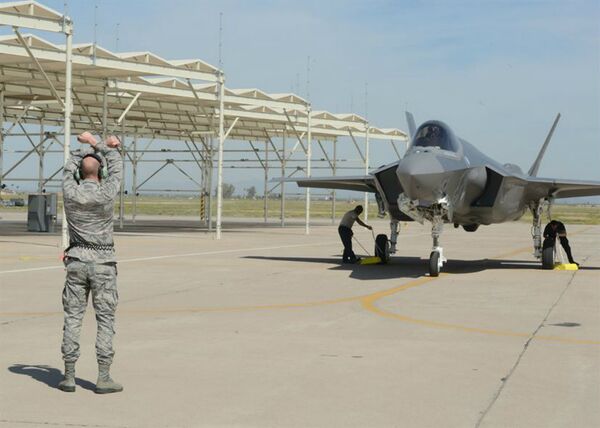The German radar-maker Hensoldt has claimed that it managed to track two US stealth fighter jets F-35 from a pony farm for almost 100 miles (about 150 kilometres) during an air show, the website C4ISRNet reports.
The fifth-generation warplanes were tracked by Hensoldt’s passive radar system TwInvis, which is equipped with sophisticated sensors and processors, following the Berlin Air Show in late 2018.
The TwInvgis system is capable of circumventing the cloaking features afforded by the F-35’s stealth technology by observing electromagnetic emissions in the atmosphere, including signals from radio and TV stations, as well as cellphone towers.
As far as the two F-35 planes are concerned, they were detected after being sent to Germany from Luke Air Force Base in Arizona for the Berlin event.
The F-35s reportedly never lifted off during the air show, so that a passive radar located in a corner of the airfield could not be tested on the warplanes.
However, Hensoldt was keeping a watchful eye on the F-35s, and after the radar makers obtained information that the fighter jets were preparing to leave Germany for the US, they immediately activated the TwInvis system located at a nearby pony farm.
With a spokesperson for the F-35 Joint Program Office declining to comment on the matter, Lockheed spokesman Michael Friedman wrote in a statement to Defence News that “when the F-35 is not flying operational missions that require stealth — for example, at air shows, ferry flights or training — they ensure air traffic controllers and others are able to track their flight to manage airspace safety.”
“The Air Force can best address questions related to their F-35s participation at the Berlin Air Show,” he added.
The reported tracking incident comes as the F-35 reportedly continues to face certain issues even though development commenced several decades ago and the budget for the aircraft surpassing $1 trillion.
According to the documents obtained by Defence News, some F-35 pilots experience cabin pressure spikes which give them ear and sinus pain, while the jets receive structural damage at speeds beyond Mach 1.2 and have problems operating in areas with cold weather.



